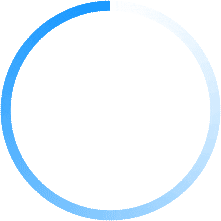Report Coverage
This report focuses on the wholesale and retail of food in Morocco and includes geographic and economic information on the country and its food industry, including the size of the sector, notable players, developments and corporate actions. There are profiles of six companies that largely include the major players in the sector such as Marjane Holdings, Label Vie, BIM and Akwa Group.
Introduction
This report focuses on the wholesale and retail of food in Morocco. The industry is dominated by traditional grocery shops that are informal and often family-owned and individually managed, in addition to informal open-air markets. It is, however, expected that conventional supermarkets will expand to account for 30% of retail sales by 2025 from 20% currently. \r\nFood retail accounted for 13.4% of Morocco’s GDP in 2019 and is considered to be a high potential sector. Large distribution accounts for 15% of food retail. Morocco has implemented programmes to boost the industry that are focused on the modernisation of tradition food retail outlets. \r\n
Strengths
• Consumer behaviour and growing spending power are positive for the sector.
• Political and economic stability make Morocco an attractive investment destination.
• The government is implementing measures in favour of the development of food and grocery retail.
• The penetration rate of modern food retail is expected to grow.
Weaknesses
• 45% of the population live in small cities and rural areas with limited purchasing power.
• Consumers are focused on essential items rather than expensive items.
• Disparities between rural and urban areas and between social layers in terms of purchasing power and access to modern food retail outlets.
• Imbalance in the geographic distribution of the food retail outlets and sales, most being concentrated in large cities and on the Casablanca-Rabat axis.
• Low level of specialised skills in the retail sector.
Opportunities
• Morocco and the US signed a free trade agreement that provides preferential access to many US food products.
• Online food retail is growing with the implementation of delivery services for food products.
• Significant potential for digital and e-commerce.
• The fast growth of modern distribution channels. More supermarkets are expected to open in the future.
• The proximity of Europe to Morocco makes imports of small quantities economically feasible.
• There is a growing perception that supermarkets offer safer and cheaper products. Increased acceptance of packaged products.
• There is a growing western-minded youth and a developing middle class.
Threats
• Delays in the construction and opening of new stores and retail outlets could be a consequence of the decrease in real estate activity caused by the pandemic crisis.
• Risk of competition from new modes of retail such as online.
• The average basket and levels of spending could decrease.
• There is a risk of social unrest relating to unemployment, inequality and distrust of the business elite.
Outlook
The wholesale and retail food industry is dominated by four large chains, but the traditional independent grocery retail outlets outnumber conventional supermarkets and account for most of the sector’s turnover (58%). The conventional food retail sector has growth potential, as it is expected that by 2025, the conventional food retail outlets will expand to account for 30% of retail sales from 20% currently. This growth is driven by many factors including, growing urbanisation, increasing spending power and changing consumer trends towards online retail. \r\n\r\nDigitalisation and shift to online retail are the major trends that will drive the sector in the future.
Full Report
R 6 500.00(ZAR) estimated $359.41 (USD)*
Industry Landscape
R 4 550.00(ZAR) estimated $ 251.59 (USD)*
Historical Reports
The Wholesale and Retail of Food Industry in Morocco 2018-09-27
R 1 900.00(ZAR) estimated $105.06 (USD)*
View Report Add to CartTable of Contents
[ Close ]| PAGE | ||
|---|---|---|
| 1. | INTRODUCTION | 1 |
| 2. | COUNTRY PROFILE | 1 |
| 2.1. | Geographic Position | 3 |
| 3. | DESCRIPTION OF THE INDUSTRY | 5 |
| 3.1. | Industry Value Chain | 7 |
| 3.2. | Geographic distribution | 9 |
| 4. | SIZE OF THE INDUSTRY | 9 |
| 5. | STATE OF THE INDUSTRY | 12 |
| 5.1. | 5.1 Local | 12 |
| 5.1.1. | Trade | 14 |
| 5.1.2. | Corporate Actions | 15 |
| 5.1.3. | Regulations | 16 |
| 5.2. | CONTINENTAL | 19 |
| 5.3. | INTERNATIONAL | 22 |
| 6. | INFLUENCING FACTORS | 25 |
| 6.1. | COVID-19 | 25 |
| 6.2. | Economic Environment | 26 |
| 6.3. | Technology, Research and Development (R&D) and Innovation | 27 |
| 6.4. | Government Incentives and Support | 27 |
| 6.5. | Environmental Concerns | 29 |
| 6.6. | Labour | 29 |
| 7. | COMPETITION | 30 |
| 7.1. | Barriers to Entry | 31 |
| 8. | SWOT ANALYSIS | 32 |
| 9. | OUTLOOK | 33 |
| 10. | 12. INDUSTRY ASSOCIATIONS | 34 |
| 11. | REFERENCES | 34 |
| 11.1. | Publications | 34 |
| 11.2. | Websites | 36 |
| APPENDIX 1 | 2 | |
| Summary of Notable players | 2 | |
| COMPANY PROFILES | 3 | |
| Akwa Group S.A. | 3 | |
| BIM Stores SARL | 5 | |
| Label Vie S.A. | 7 | |
| Marjane Holding S.A. | 9 | |
| Societe Vivo Energy Maroc S.A. | 11 | |
| YNNA Holding S.A. | 13 |



